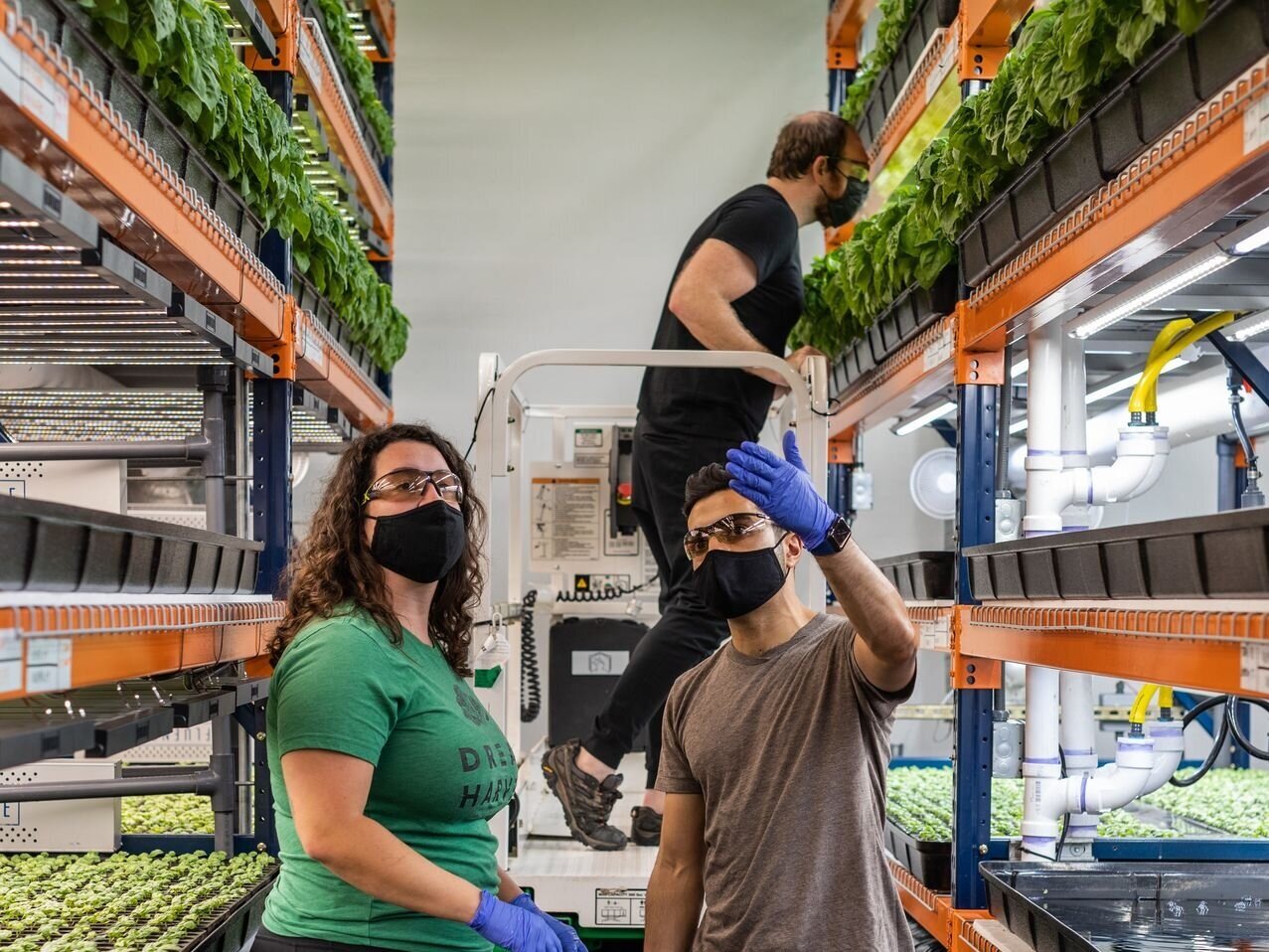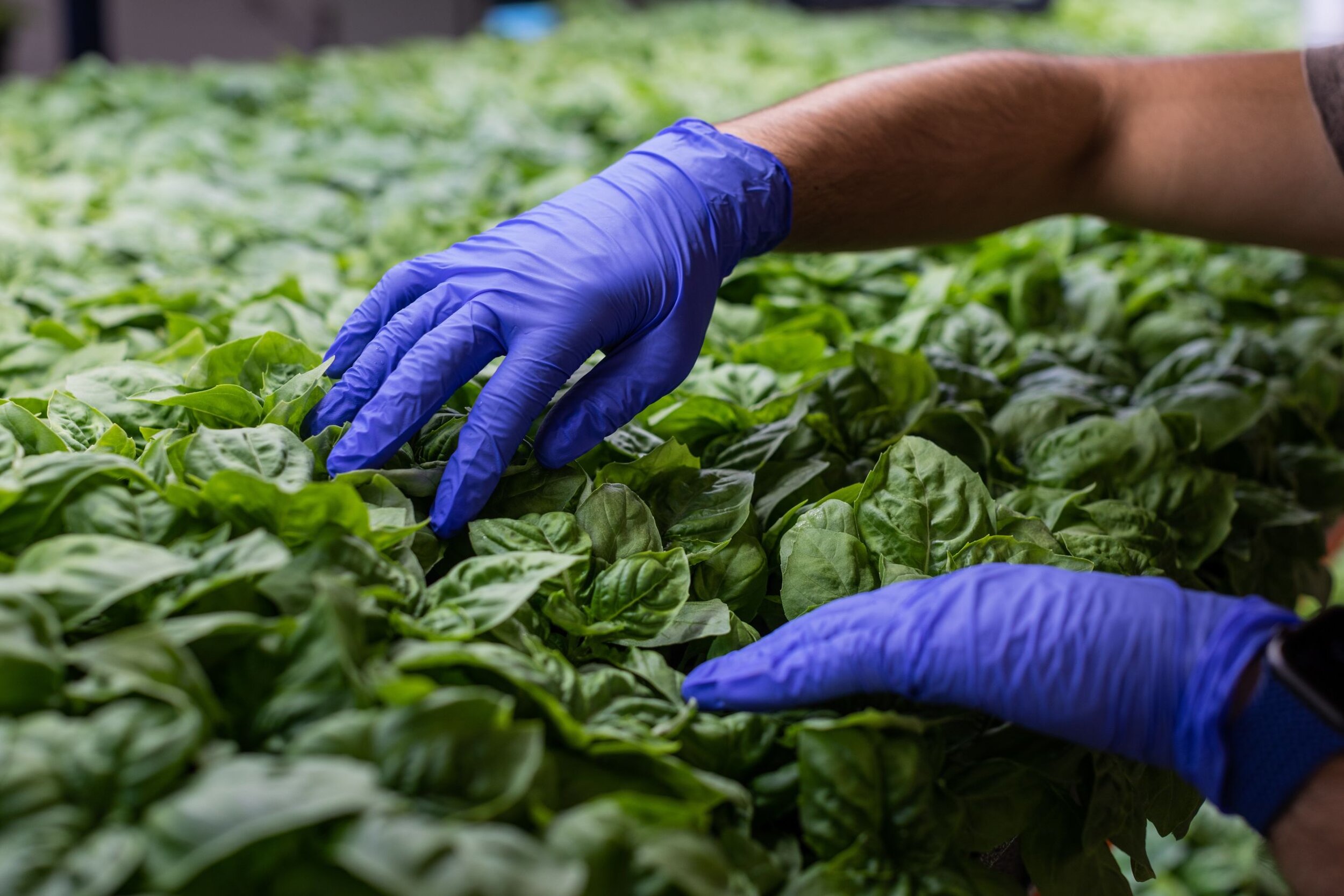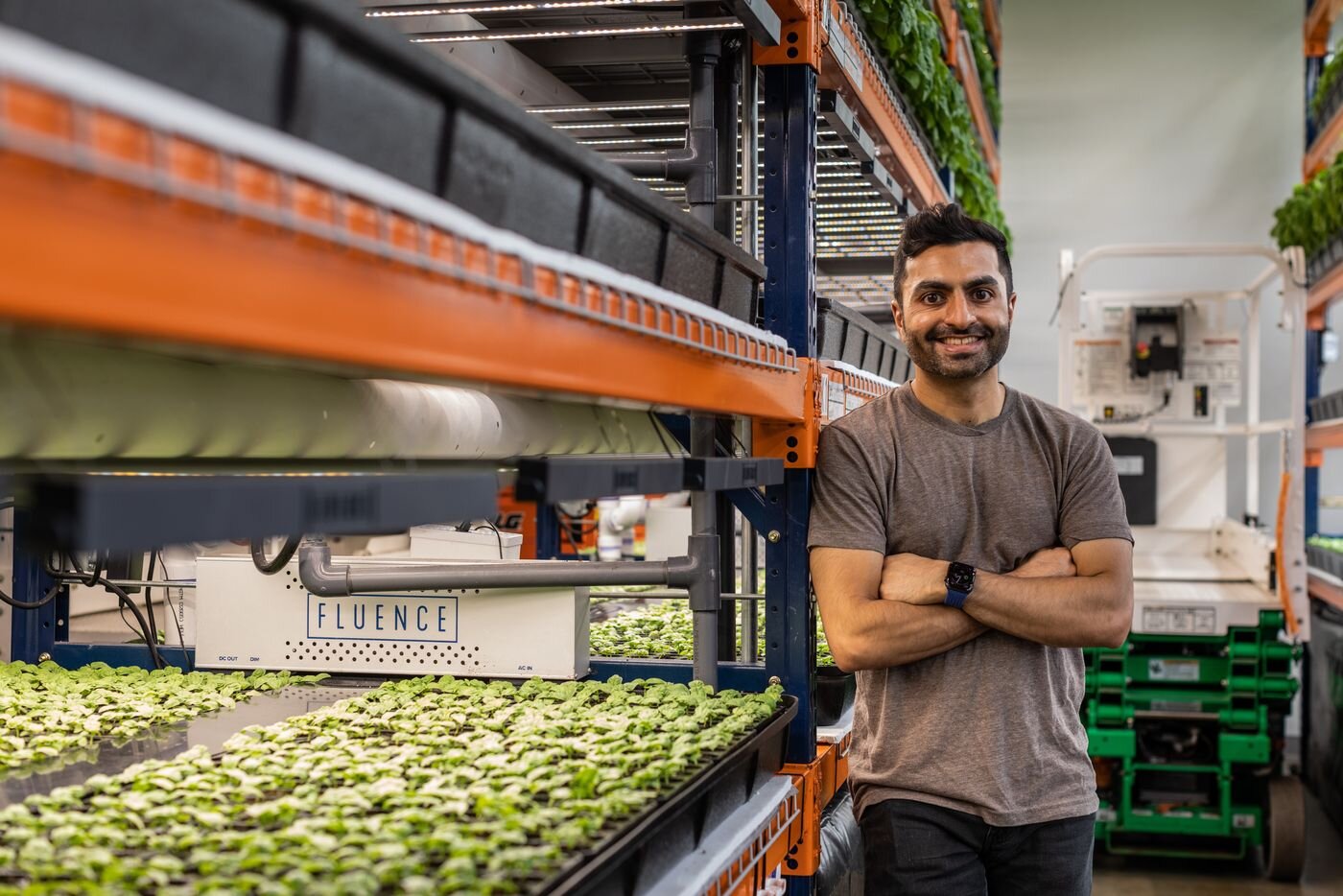Aug 19, 2021
Origin Story Of The Dream Harvest Farming Co.

Zain Shauk, CEO of Dream Harvest Farming, talks with Bree McDaniel, the company’s horticulture manager. Mr. Shauk left journalism to work in agriculture. Photograph by Michael Starghill Jr. for The Wall Street Journal.
Editor’s Note: We love seeing the huge strides former Agritecture client Dream Harvest is making in the CEA industry. With their farm being carbon negative and powered by 100% Texas wind energy, we see endless potential for other CEA operators to switch to renewable energy and continue feeding populations whilst being more sustainable. The 2021 Global CEA Census is looking to inform the industry on how sustainable CEA businesses truly are. Take the survey to share your sustainability story!
CONTENT SOURCED FROM THE WALL STREET JOURNAL
Written By Krithika Varagur; Photographs by Michael Starghill Jr. for The Wall Street Journal
The origin story of the Dream Harvest Farming Co. sounds straight out of Silicon Valley.
College friends Zain Shauk and Harmeet Singh, while on a 2014 trip to Las Vegas, became absorbed in a discussion of hydroponic farming, which involves growing plants without soil. They talked about it nonstop, convinced that it was the future of agriculture, breaking only to watch a Britney Spears concert.
Within six months, both had quit their jobs, moved to a house in the Houston suburbs and started sketching out lettuce-growing methods on the dining-room table. They built a prototype in a garage and raised money from friends and family to launch their startup. By 2016, Mr. Shauk, a former journalist, and Mr. Singh, a chemical engineer, were selling their greens to local restaurants. They added grocery-store sales in 2017. Today they have closed $4 million in funding, run a team of 32 people and operate 7,500 square feet of warehouse space.

Basil plants at Dream Harvest Farming’s Houston warehouse. Photograph by Michael Starghill Jr. for The Wall Street Journal.
“There was a steep learning curve, but there’s nothing I’d rather be doing today,” says Mr. Shauk, 36 years old, who lives in Houston and is the company’s CEO. “As a journalist, I often felt like I was on the sidelines as an observer, but as a farmer, I make such a direct impact on our food supply and people’s lives.”
More young Americans are joining the agriculture sector and changing what it means to work as a farmer. Only 8% of farm producers were under 35 in the 2017 USDA census, the most recent available, compared with 34% over 65. Though the workforce skews much older—their average age was 57.5 in 2017—youth representation is growing. From 2012 to 2017, the number of producers under age 35 grew 11% to about 285,000, while producers age 35-64 had shrunk by 2%. The median annual wage for farmers, ranchers and other agricultural managers was about $68,000 in May 2020, according to the Bureau of Labor Statistics.
These younger farmers often don’t have a family background in farming and are more comfortable using high-tech methods and software. And while the financial hurdles to starting a farm can be steep, and turn some off altogether, others are committed to making it work.
Young people interested in agriculture today have a range of career paths, says Benjamin Houlton, dean of Cornell University’s agricultural college. Some 8% of the college’s undergraduates go on to become “classic farmers,” he says, and about 36% end up in the agriculture industry at large.

Mr. Shauk says he entered the business after growing frustrated with the quality of the vegetables in his local supermarket. Photograph by Michael Starghill Jr. for The Wall Street Journal.
Periods of economic crisis can often lead to a greater interest in small-scale farming, says Severine von Tscharner Fleming, founder of Greenhorns, a nonprofit for young farmers. “There’s a little bit of a cyclical pattern, and the pandemic seems similar to the 2007-09 recession, when there was also an uptick in interest from people of nonfarm backgrounds,” says Ms. von Tscharner Fleming, who lives in Pembroke, Maine. In both cases, unemployment also created a larger pool of workers who were open to giving farming a shot, she says.
Marcus Mamourian, a 25-year-old who graduated from Brown University in 2018 and was a Fulbright scholar in Berlin, became a full-time farmer at Ms. von Tscharner Fleming’s farm three months ago, after unfulfilling stints copywriting and teaching high school German.
“I was originally thinking about working on a farm or ranch for a short time before applying to law school, but now I like it so much that I feel like I’m going to stay here for a while,” he says. Every day is different: He helps make blueberry jam, takes care of sheep after they give birth, builds oyster cages and more.
As for running one’s own farm, it remains a capital-intensive venture. Sometimes the bottom line just doesn’t work out. Nearly one-third of small farmers are expected to face bankruptcy by the end of the year, according to a survey of 440 farmers published in May 2020 by the Stone Barns Center, an educational nonprofit affiliated with the restaurant Blue Hill at Stone Barns in Pocantico Hills, N.Y. that is why some millennials who once chased farm dreams are transitioning into related fields.
Michael Hanan, 34, started two small organic farms in Austin, Texas, in 2011 and 2015, but found it hard to turn a profit. He doesn’t have a family background in agriculture, nor did he study it in college.
After years of tight margins, a 2018 tornado took out one of his two greenhouses and he found it tough to recover after that, he says. Shortly after letting the second farm go in June 2018, he reached out to an Austin-based company called Fluence Bioengineering, which makes LED lights for growing plants indoors, that he had gotten to know as a farmer. He started there that August as a sales representative. Today, he’s a sales manager.
“In some ways, I do miss growing, because being in the greenhouse and working with plants is really satisfying,” he says. “But it was also really difficult. And I really love my job now.”
Many young farmers today, like many young workers in general, have side gigs. Some 58% of U.S. producers overall, including 65% of those under 35, had a primary occupation other than farming, per the 2017 USDA census.
Kyle Jaster, a 39-year-old former tech executive, started a tiny farm in West Shokan, N.Y., in the Catskills, in 2016. He raises about 50 hogs a year, selling a few of them whole, and turning others into salami and other cured meats. He works only with his brother and hires no seasonal labor or farmhands.
“It’s just a part-time thing and is one of three sources of income I have,” he says. He is also COO of Harvie, a grocery delivery startup, and does independent consulting for food-tech companies.
He says his farm turns a profit even at its small scale due to his loyal client base.
For young people contemplating a career in farming after, or despite, the pandemic, Mr. Shauk in Houston suggests starting with your own grocery cart.
“I decided to start farming greens after having one too many experiences buying lettuce that went bad before I even got home,” he says. “I would encourage others to think that way, too. If you’re frustrated by the meat, types of fish, fruits, or whatever else you buy week after week, you actually have the option to change that, which is so cool.”

